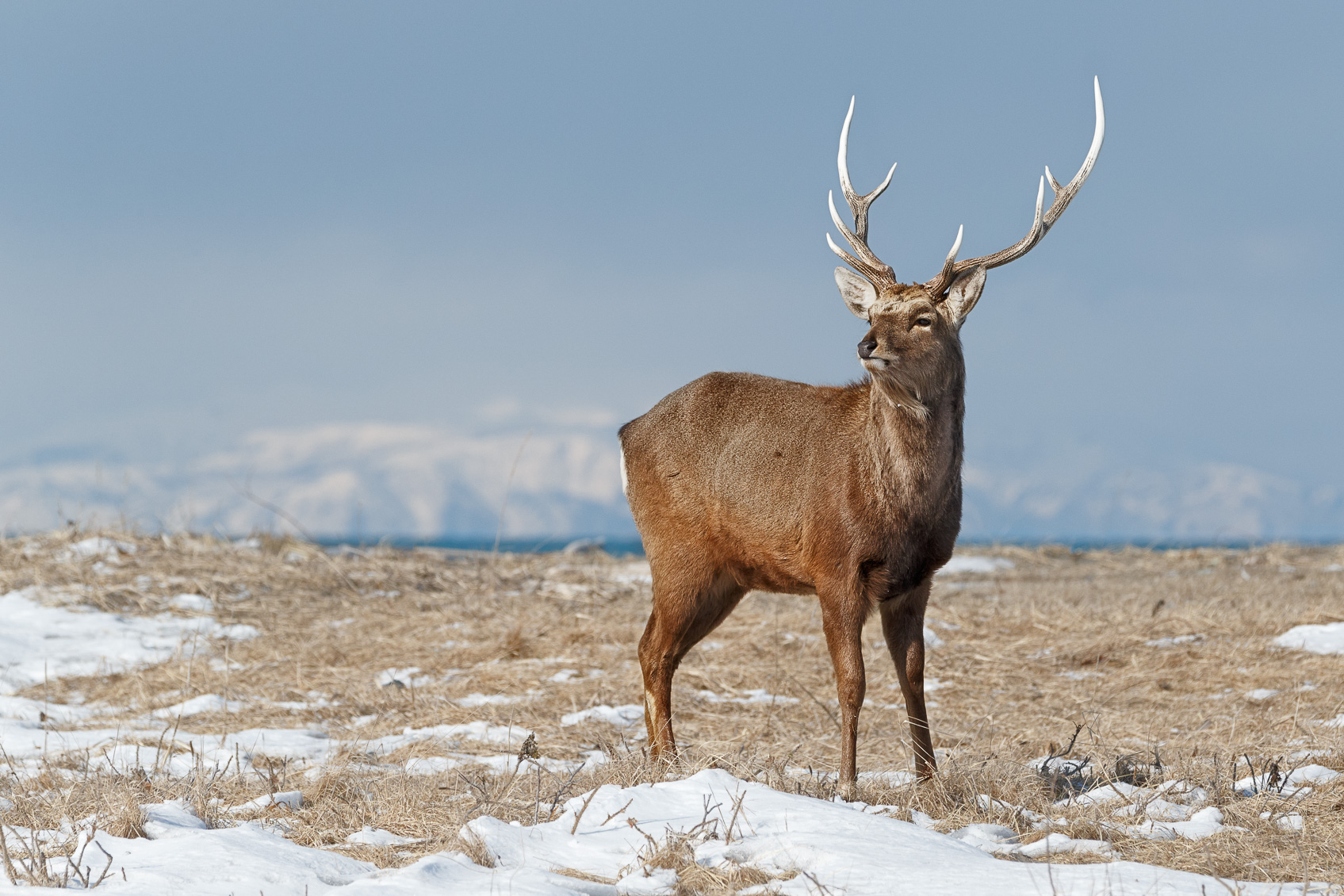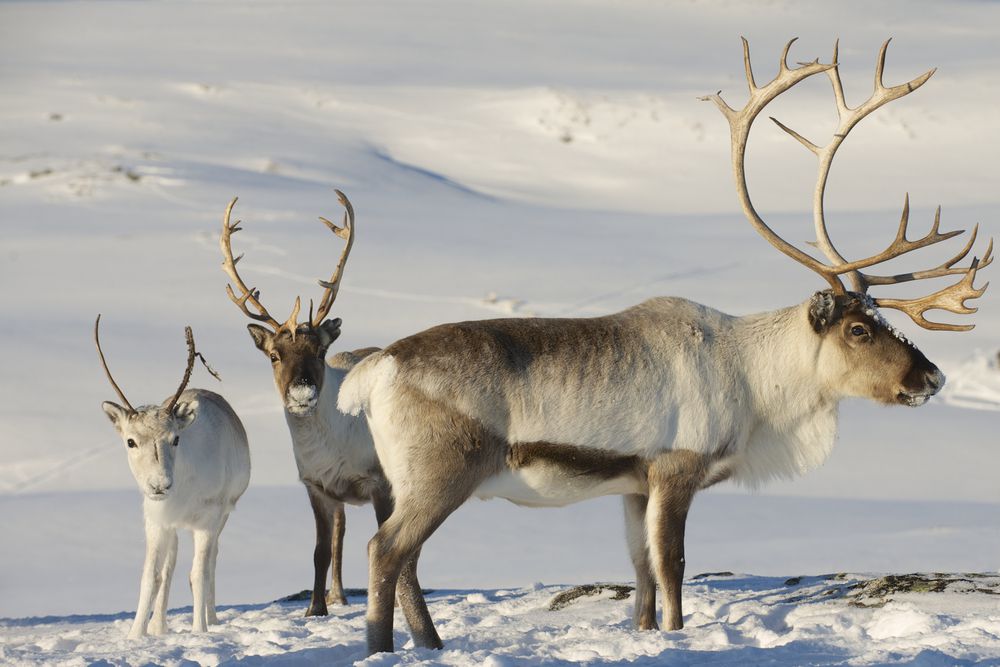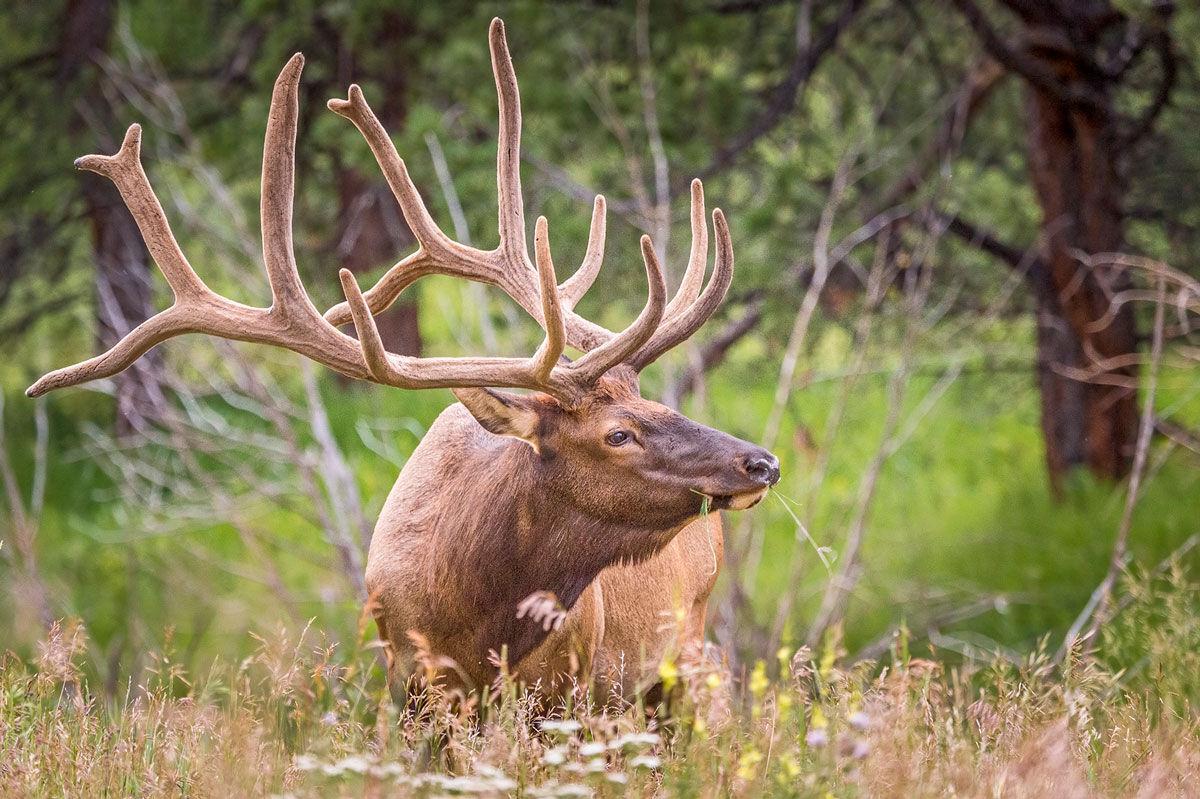Antlers are a unique feature found in the deer family, Cervidae, and are different from horns, which are found in the bovine family. Antlers are made of bone and are shed annually, while horns are made of keratin and do not shed.
Antlers are used for various purposes, including competition among males for females, defense against predators, and asserting dominance for food resources.
You are reading: 10 Types Of Animals With Antlers
In this article, we will explore 10 types of animals with antlers, including white-tail deer, moose, reindeer, elk, caribou, fallow deer, red deer, sika deer, mule deer, and roe deer.

10 Types Of Animals With Antlers
White-tail Deer

White-tailed deer are a common species of deer found in North America, and they are known for their distinctive antlers. Antlers are branched bones that are shed every year, and they are among the most identifiable characteristics of the deer family, Cervidae, which comprises caribou, elk, moose, mule deer, and white-tailed deer.
Antlers have been prized and pursued by hunters for many centuries, and their rapid growth and deciduous nature have made them fascinating for hunters and wildlife enthusiasts alike.
Moose

Moose are the largest members of the deer family, and they are known for their impressive antlers. Moose antlers are unique in that they are palmate, or shovel-shaped, and characterized by broad, up-reaching parallel palms.
Moose antlers are also known as pole-horn type, having long tines or spikes. Antlers are grown and shed annually, and they are used by males to compete for females and establish dominance over other males. Moose antlers can weigh up to 30 kg and can grow nearly an inch every single day during the summer.
Antlers are highly vascularized tissue that rapidly grow from early spring to near summer’s end. Moose antlers are shed every year, and the process of shedding is a normal annual process for male moose, deer, elk, and other members of the Cervidae family.
Moose antlers are highly valued by hunters and wildlife enthusiasts, and they are often used in decorative and artistic applications.
Reindeer

Reindeer, also known as caribou in North America, are a unique species of deer that are found in the Arctic regions of Europe, Asia, and North America. Reindeer are known for their impressive antlers, which are the largest and heaviest of all living deer species relative to their body size.
Unlike most other deer species, both male and female reindeer grow antlers, and they shed them annually. The antlers of male reindeer can grow up to 51 inches long, while female antlers can reach up to 20 inches.
Reindeer antlers are covered with a soft substance called velvet while they are developing and growing. Reindeer use their antlers for various purposes, including competing for mates, establishing dominance over other reindeer, and defending food resources.
Elk

Elk are one of the largest members of the deer family, and they are known for their impressive antlers. Elk antlers are unique in that they have a distinct shape and are characterized by long tines or spikes.
Read more : 10 Types Of Shells
Antlers are grown and shed annually, and they are used by males to compete for females and establish dominance over other males. Elk antlers can weigh up to 40 pounds and can grow up to an inch per day during the summer. Antlers are highly vascularized tissue that rapidly grow from early spring to near summer’s end.
Elk antlers are shed every year, and the process of shedding is a normal annual process for male elk, deer, moose, and other members of the Cervidae family.
Elk antlers are highly valued by hunters and wildlife enthusiasts, and they are often used in decorative and artistic applications. Additionally, elk antlers are used as a natural dog chew, as they are a rich source of minerals and nutrients.
Caribou
Caribou, also known as reindeer in North America, are a unique species of deer that are found in the Arctic regions of Europe, Asia, and North America.
Caribou are members of the cervidae family, a branch of ungulates, who grow antlers every year. In fact, caribou are the only species among the deer family in which both males and females have antlers. The process of shedding and re-growing antlers year after year is a unique process.
In just a matter of weeks, bull caribou can grow antlers which weigh up to 20 pounds and are over a meter in length. Female caribou keep their antlers to defend food, which is critical during their pregnancy. However, there are exceptions where 3-5% of cows will never grow antlers at all.
Initially, caribou antlers grow as a soft cartilage-like tissue filled with blood vessels and nerves which carry calcium and other nutrients necessary for antler development. As the season progresses, antlers become calcified and harden, and eventually, the vascular skin falls off.
Fallow Deer
Fallow deer, also known as Dama dama, are a species of ruminant mammal belonging to the family Cervidae. They are historically native to Turkey and possibly the Italian Peninsula, Balkan Peninsula, and the island of Rhodes in Europe.
Prehistorically native to and introduced into a larger portion of Europe, it has also been introduced to other regions in the world. Fallow deer are highly dimorphic, polygynous breeders, and the breeding season or rut lasts about 135 days.
The breeding season tends to occur in the second half of October in the Northern Hemisphere, while it occurs in April in the Southern Hemisphere. Fallow deer are highly valued by hunters and wildlife enthusiasts, and they are often used in decorative and artistic applications.
Red Deer
Red deer, also known as Cervus elaphus, are one of the largest deer species in the world, and they are known for their impressive antlers. The growth and formation of antlers is a complex process that appears to be a process known as modified endochondral ossification – in other words, a cartilage skeleton is turned to bone.
Red deer antlers are distinctive in being rather straight and rugose, with the fourth and fifth tines forming a “crown” or “cup” in larger males. Any tines in excess of the fourth and fifth tines grow radially from the cup, which are generally absent in the antlers of smaller red deer, such as Corsican red deer.
Male red deer retain their antlers for more than half the year, and are less gregarious and less likely to group with other males when they have antlers.
Shed antlers and velvet represent a veritable goldmine of nutrients for many animals, including both sexes of deer. Antlers contain a variety of essential elements, including calcium, phosphorous, sulphur, magnesium, potassium, sodium, and iron, as well as various amino acids, including all eight essential ones.
Here are some interesting facts about red deer antlers:
– A Red deer with 12 points (six per antler) to his antler is called a Royal stag, while 14 points make an Imperial stag and an animal with 16 points or more is referred to as a Monarch.
– The number of tines is an unreliable indication of age, and once the stag passes about 10 years old, the number of tines often starts to decline in a stage known as “going back”.
– The names given to the year classes of male Red deer, often assigned based on the level of antler development, are: Yearling = Calf, Second Year = Brocket, Third Year = Spayad, Fourth Year = Staggard, Fifth Year = Stag, Sixth Year = Hart, Seventh + Year = Great Hart.
Sika Deer
Sika deer, also known as Cervus nippon, are a species of deer native to much of East Asia and introduced to other parts of the world. Sika deer are highly valued by hunters and wildlife enthusiasts, and they are often used in decorative and artistic applications.
Sika stags have stout, upright antlers with an extra buttress up from the brow tine and a very thick wall. A forward-facing intermediate tine breaks the line to the top, which is usually forked. Occasionally, sika antlers develop some palmation (flat areas).
Females carry a pair of distinctive black bumps on the forehead. Antlers can range from 28 to 45 cm (11 to 17+1⁄2 in) to more than 80 cm (30 in), depending on the subspecies.
Read more : Discover The Top 6 Most Expensive Types Of Koi Fish
Velvet antler (dried immature antlers) is a popular ingredient in traditional Chinese medicine, and sika in China were domesticated long ago for the antler trade, along with several other species.
Mule Deer
Mule deer, also known as Odocoileus hemionus, are a species of deer that are native to western North America. Mule deer are known for their uniquely large ears resembling those of a mule, earning them the species name hemionus meaning ‘half-mule’. They have mostly brown-gray coats with visible cream or white colored rumps.
Adult mule deer typically range in weight from 125-300lbs, standing around 3.3 feet tall at the shoulder. Mule deer usually have small or missing brow tines with bifurcated antler branching, which means tines that split once off of a main beam, and then again toward the tips.
Mule deer antlers are shed annually, and the process of shedding is a normal annual process for male mule deer, deer, elk, and other members of the Cervidae family.
Here are some interesting facts about mule deer antlers:
– Mule deer antlers can grow up to 3 feet in length and weigh up to 15 pounds.
– Mule deer antlers are highly valued by hunters and wildlife enthusiasts, and they are often used in decorative and artistic applications.
– Mule deer antlers are shed annually, and the process of shedding is a normal annual process for male mule deer, deer, elk, and other members of the Cervidae family.
– Mule deer antlers are highly vascularized tissue that rapidly grow from early spring to near summer’s end.
– Mule deer are herbivores with a four-chambered stomach similar to cattle, elk, and other ruminants.
Roe Deer
Roe deer, also known as Capreolus capreolus, are a species of deer that are native to Europe, Asia, and parts of Africa. They are relatively small deer, with a body length of 95-135 cm and a weight of 15-35 kg.
Roe deer are highly valued by hunters and wildlife enthusiasts, and they are often used in decorative and artistic applications. Male roe deer, called bucks, have small antlers that have three points each when fully grown.
Antlers are described as ‘pearled’ or ‘bearded’ when they are heavily textured with lots of nodules. Bucks in good conditions develop antlers up to 20-25 cm long with two or three, rarely even four, points.
Antlers are shed annually, and the process of shedding is a normal annual process for male roe deer, deer, elk, and other members of the Cervidae family.
Here are some interesting facts about roe deer antlers:
– Roe deer antlers are highly valued by hunters and wildlife enthusiasts, and they are often used in decorative and artistic applications.
– Male roe deer, called bucks, have small antlers that have three points each when fully grown.
– Antlers are described as ‘pearled’ or ‘bearded’ when they are heavily textured with lots of nodules.
– Bucks in good conditions develop antlers up to 20-25 cm long with two or three, rarely even four, points.
– Antlers are shed annually, and the process of shedding is a normal annual process for male roe deer, deer, elk, and other members of the Cervidae family.
FAQS
1. What are antlers?
Antlers are branched bones that are shed every year and are found on animals in the deer family, Cervidae. Antlers are different from horns, which are found in the bovine family.
2. Which animals have antlers?
Animals in the deer family grow antlers. Some of the most common animals with antlers include white-tailed deer, elk, moose, caribou, mule deer, fallow deer, red deer, sika deer, and roe deer.
3. What are antlers used for?
Antlers are used for various purposes, including competing for mates, establishing dominance over other animals, and defending food resources.
4. Do all deer have antlers?
No, not all deer have antlers. For example, female reindeer (caribou) have antlers, but female white-tailed deer do not.
5. How do antlers grow?
Antlers grow from the supporting structures that develop in the lateral region of the frontal bones called pedicels. Antlers are highly vascularized tissue that rapidly grow from early spring to near summer’s end.
6. Why do animals shed their antlers?
Antlers are shed annually, and the process of shedding is a normal annual process for male deer, elk, moose, and other members of the Cervidae family. Shed antlers and velvet represent a veritable goldmine of nutrients for many animals, including both sexes of deer.
7. Are antlers valuable?
Antlers are highly valued by hunters and wildlife enthusiasts, and they are often used in decorative and artistic applications. Additionally, antlers are used as a natural dog chew, as they are a rich source of minerals and nutrients.
8. Do antlers vary in size and shape?
Yes, antlers can vary in size and shape depending on the species, age, and health of the animal, as well as environmental factors such as food availability and genetics.
Source: https://petstutorial.com
Category: Animals










